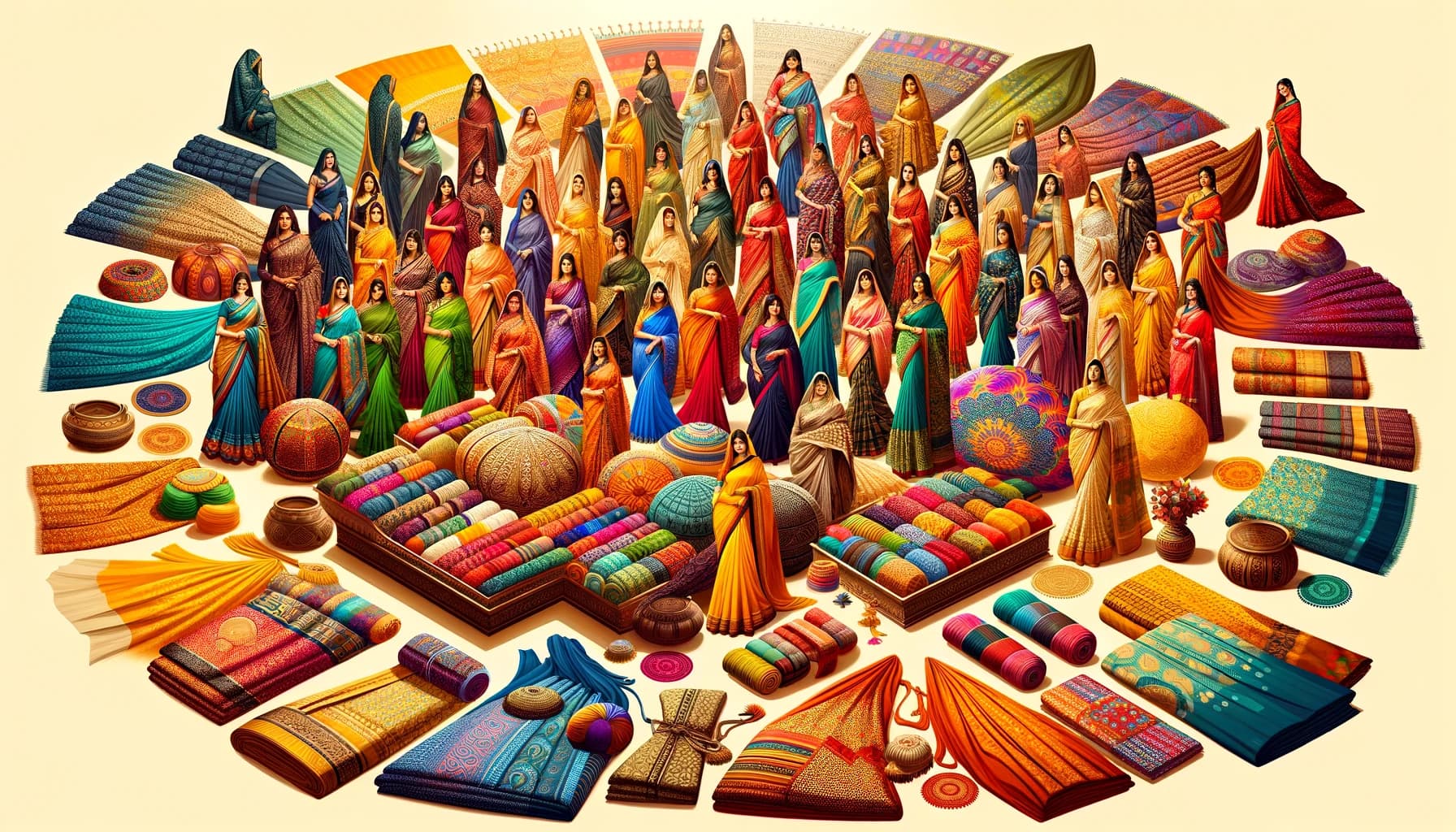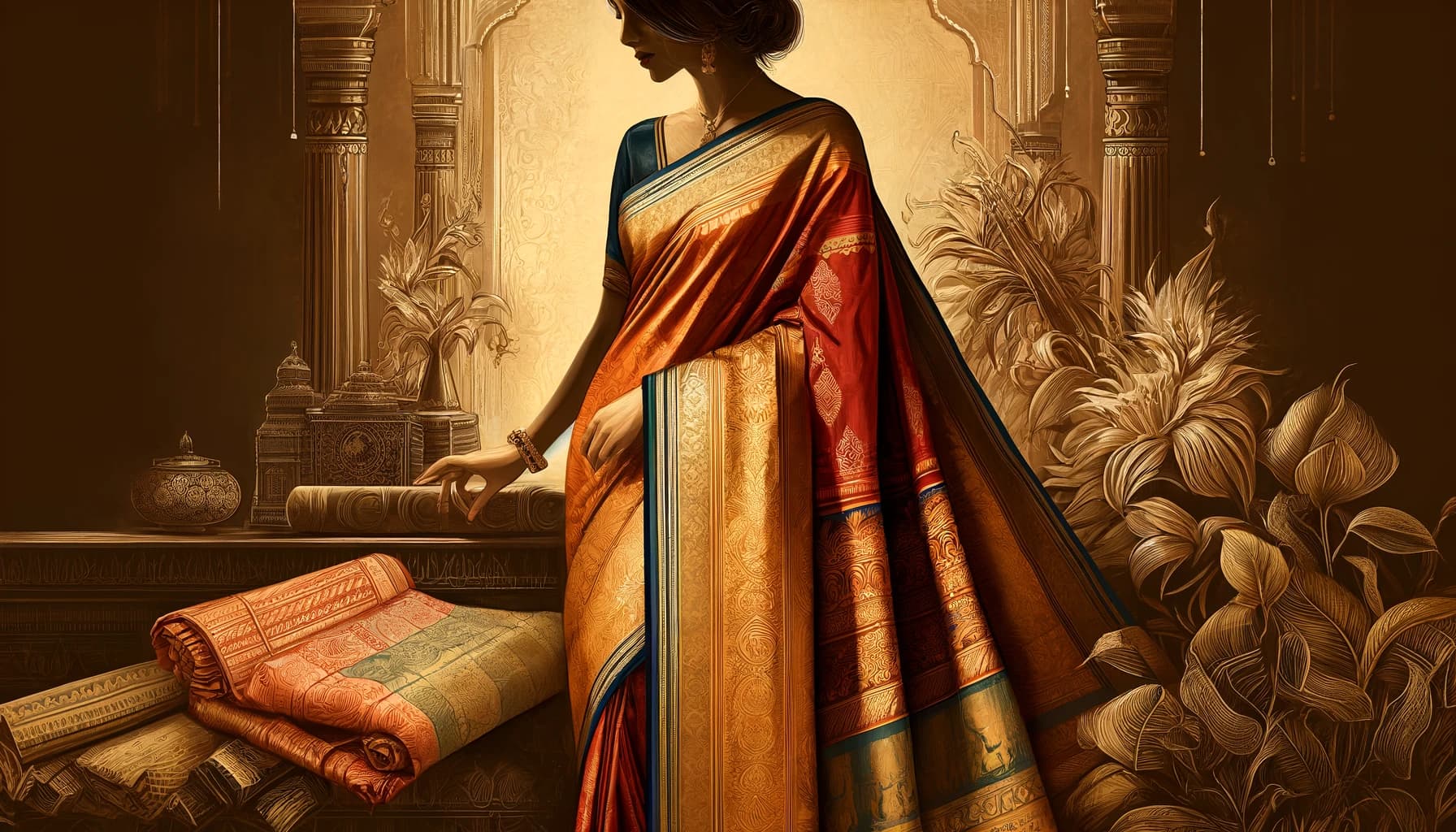
A Comprehensive Guide to 15 Different Types of Sarees Across India
Saree, the epitome of grace and elegance, holds a special place in every Indian woman's wardrobe. With its rich cultural heritage and timeless appeal, the saree comes in a myriad of styles, each reflecting the unique traditions and craftsmanship of its region. In this comprehensive guide, we delve into 15 different types of sarees from across India, celebrating the diversity and beauty of this iconic attire.
1. Kanjeevaram Saree (Tamil Nadu): Originating from the temple town of Kanchipuram, the Kanjeevaram saree is renowned for its opulent silk fabric, vibrant colors, and intricate zari work. Adorned with traditional motifs inspired by nature and mythology, this saree exudes regal charm and is a favorite choice for weddings and festive occasions.
2. Banarasi Saree (Uttar Pradesh): Crafted in the ancient city of Varanasi, the Banarasi saree is characterized by its luxurious silk fabric, elaborate brocade work, and exquisite craftsmanship. Known for its timeless appeal and intricate designs, this saree is a symbol of elegance and grandeur, making it a prized possession for every Indian bride.
3. Bandhani Saree (Gujarat and Rajasthan): Originating from the vibrant states of Gujarat and Rajasthan, the Bandhani saree is celebrated for its tie-and-dye technique, which creates intricate patterns and designs. Adorned with vibrant colors and traditional motifs, this saree is perfect for festive celebrations and special occasions.
4. Chanderi Saree (Madhya Pradesh): Hailing from the town of Chanderi in Madhya Pradesh, the Chanderi saree is known for its lightweight texture, sheer elegance, and delicate zari work. Woven with fine silk and cotton threads, this saree exudes understated sophistication, making it ideal for both casual and formal wear.
5. Paithani Saree (Maharashtra): Originating from the city of Paithan in Maharashtra, the Paithani saree is prized for its rich silk fabric, intricate weaving techniques, and vibrant color combinations. Adorned with intricate motifs inspired by nature and mythology, this saree is a symbol of Maharashtrian culture and heritage.
6. Assam Silk Saree (Assam): Handwoven by skilled artisans in Assam, the Assam Silk saree is crafted from the finest quality silk and adorned with traditional motifs and designs. Known for its durability, lustrous texture, and vibrant colors, this saree is a reflection of Assamese craftsmanship and tradition.
7. Kota Doria Saree (Rajasthan): Hailing from the town of Kota in Rajasthan, the Kota Doria saree is prized for its lightweight and breathable fabric, intricate checkered patterns, and delicate zari borders. Perfect for hot and humid climates, this saree is a popular choice for casual and everyday wear.
8. Kantha Stitch Saree (West Bengal): Originating from the state of West Bengal, the Kantha Stitch saree is characterized by its intricate hand-embroidered designs, depicting scenes from everyday life, mythology, and nature. Made from fine cotton fabric, this saree is known for its softness, comfort, and artistic appeal.
9. Muga Silk Saree (Assam): Exclusive to Assam, the Muga Silk saree is crafted from the golden silk produced by the Muga silkworms found only in this region. Adorned with traditional motifs and designs, this saree is prized for its lustrous texture, durability, and natural golden hue.
10. Patola Silk Saree (Gujarat): Hailing from the Patan region of Gujarat, the Patola Silk saree is renowned for its intricate double ikat weaving technique, which creates symmetrical patterns and designs on both sides of the fabric. Adorned with vibrant colors and geometric motifs, this saree is a symbol of Gujarati craftsmanship and tradition.
11. Pochampally Ikat Saree (Telangana): Handwoven in the town of Pochampally in Telangana, the Pochampally Ikat saree is known for its distinctive tie-and-dye technique, which creates intricate patterns and designs on the fabric. Adorned with vibrant colors and geometric motifs, this saree is a testament to the skill and creativity of the weavers.
12. Sambalpuri Saree (Odisha): Crafted in the Sambalpur region of Odisha, the Sambalpuri saree is renowned for its unique tie-and-dye technique known as "Ikat," which creates intricate patterns and designs on the fabric. Adorned with traditional motifs and vibrant colors, this saree is a symbol of Odia culture and tradition.
13. Tant Saree (West Bengal): Handwoven by skilled artisans in West Bengal, the Tant saree is crafted from fine cotton threads and adorned with traditional motifs and designs. Known for its lightweight and breathable fabric, this saree is perfect for everyday wear and casual occasions.
14. Uppada Silk Saree (Andhra Pradesh): Originating from the town of Uppada in Andhra Pradesh, the Uppada Silk saree is known for its intricate weaving, zari work, and lightweight fabric. Adorned with traditional motifs and designs, this saree is prized for its elegance and sophistication, making it a favorite choice for weddings and special occasions.
15. Narayanpet Saree (Telangana): Hailing from the town of Narayanpet in Telangana, the Narayanpet saree is characterized by its distinctive checks pattern, vibrant colors, and traditional borders. Handwoven by skilled artisans, this saree is known for its durability, elegance, and timeless appeal.
Conclusion: From the royal Kanjeevaram saree of Tamil Nadu to the exquisite Patola Silk saree of Gujarat, each type of saree showcased in this guide is a testament to India's rich cultural heritage and diverse craftsmanship. Whether worn for weddings, festivals, or everyday occasions, these sarees embody the timeless elegance and beauty of Indian attire, making them cherished possessions for generations to come.
FAQs
What is the best saree fabric for summers?
Cotton and linen sarees are ideal for summers due to their breathability and lightness.
How do I choose a saree for a formal occasion?
Opt for silk or chiffon sarees with minimalistic designs or subtle embroidery to maintain elegance and formality.
Can sarees be worn in a modern style?
Yes, modern sarees often feature contemporary designs and can be paired with non-traditional blouses or accessories for a chic look.
What are some tips for maintaining silk sarees?
Always dry clean silk sarees and store them wrapped in muslin or pure cotton to preserve their sheen and texture.
Where can I buy authentic Indian sarees online?
For authentic Indian sarees at great prices, consider visiting TrendOye. They offer a wide selection of high-quality sarees, ensuring you find just what you need for any occasion. Check their customer reviews and benefit from their excellent customer service.



Leave a comment
This site is protected by hCaptcha and the hCaptcha Privacy Policy and Terms of Service apply.